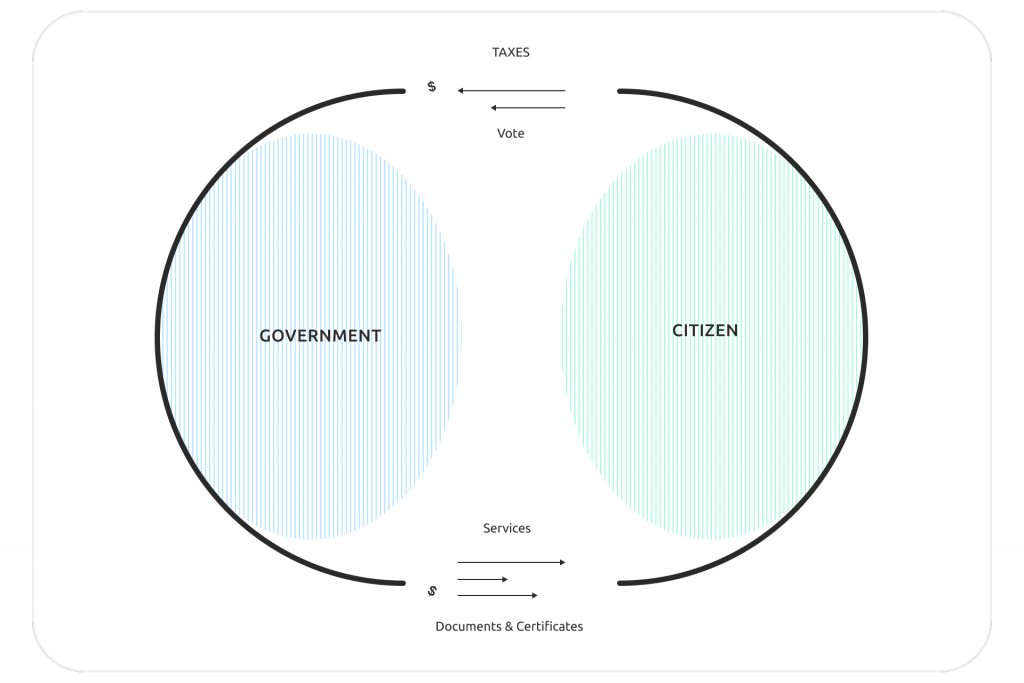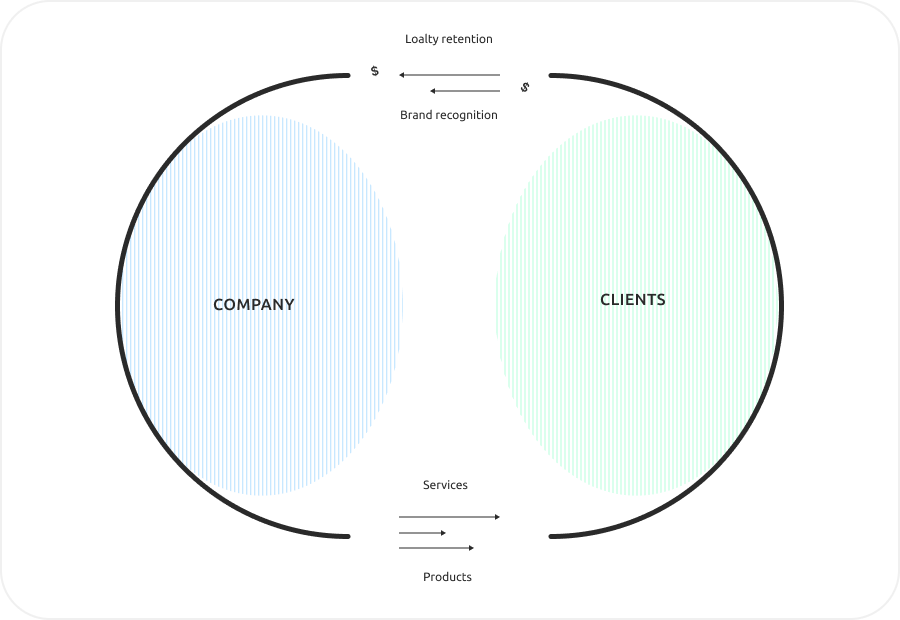The Aeilus methodology is built around the idea of presenting the movement of assets (tangible and intangible) and services within one business as the movement of a single value stream. All values in such a stream are measured with one type of measure (Value Points).
The business owner, in addition to the role of manager and leader, gets the value stream owner role. He designs the value stream, defines the value for the stream, determines how value is created, and ensures that the stream is launched.
The Aeilus approach is applicable to other value systems, such as the state or the individual.
Cyclic value systems are able to transfer value from one system participant to another in a circle. At the same time, at each stage, the value can be represented in various forms. Each participant in the system consumes a certain value and transforms and produces a new value. Each participant inside has a value system. Moreover, a negative value (Anti-value) can be returned back to the flow.
In Aeilus, a participant in the value system is called a Transformer since he transforms the value, while the value stream can be increased or decreased (in measured value points).
Let's see what the cyclical value system of the state looks like

Let's compare it with business and take a closer look at the relationship between the Company and the Clients.

By diving deeper into the "Company" transformer, we can imagine our value system inside. This is a set of units that exchange value with each other. Holding companies can be divided into business units or projects, and a division can generate value for different streams.
Every department must understand that all of their activities are subject to the cycle of value that we saw in the previous stage Company/Customers. Everything else is considered a loss of value in the system.
How to maximize value in the system?
- Defining value is key. A better definition of value leads to bigger value creation in the next steps. The value must be determined more precisely, it must be formulated correctly, taking into account all the factors influencing it.
- Prioritization - each transformer spends its efforts on creating the greatest value. Thus, anything that a transformer can deliver as value to the next transformer needs to be evaluated and sorted. However, prioritization is based not only on value but also on consumed labor costs (materials and resources), so the elements with the maximum specified value are made first.
- Fair Valuation - It is critical to periodically or continuously check with a subsequent transformer that the deliverables continue to represent the same level of value as originally specified. For systems with multiple value streams across multiple businesses, it is important to use a unified value measurement system.
- Continuous Improvement of Value Transformer - It is necessary to refer to this process as a practice by which we must maximize value and minimize waste. The way of continuous improvement can be changed to find the best solution. The continuous improvement process is looking for the best solution for managing practices, resources, and value streams to both maximize value delivered and enhance transformer efficiency.
- Continuous improvement of the Value System is a process aimed at changing streams and transformers to increase value and minimize losses. In practice, it means the allocation of specialists/departments or combining their functions, creating intermediate stages of production (additional value transformation stages), appointing additional management departments, changing production technology, etc.
The value management system can also be perceived as the gamification of processes, which consists in obtaining the maximum number of value points for some time.
- Review of value estimates (fairness of estimates) - each next transformer in the stream must re-check the value estimates of the elements of previous transformer (preferably even before they begin to be produced and delivered).
- Refinement of the definition of value – valuable results must be frequently re-negotiated and agreed upon across the whole Value System. Given that all systems are constantly changing, the nature of the outputs consumed from the previous transformer will constantly change.
The methodology includes the Value Framework Core Concept and Principles, Domains and Policies, Roles, Metrics and Reporting, and the Catalog of Practices.

